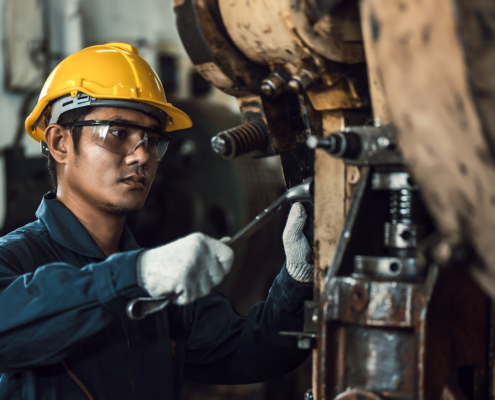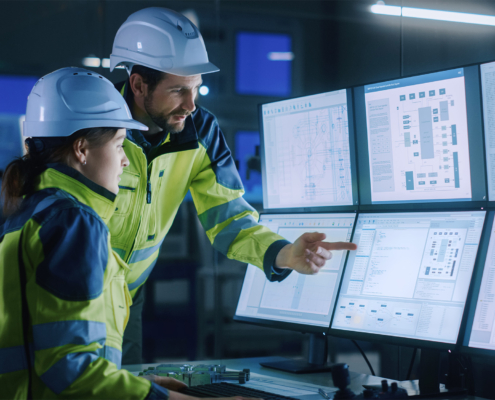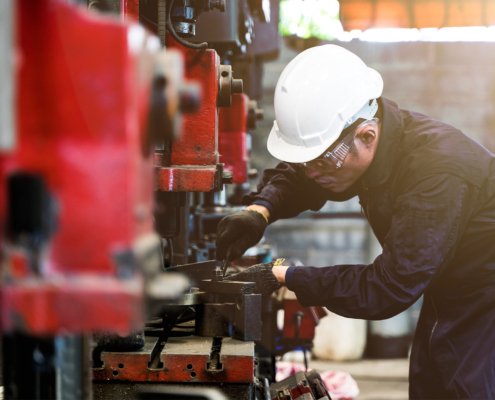 https://www.sbmech.com/wp-content/uploads/2024/09/Group-of-factory-job-workers-using-machine-equipment-in-manufacturing-workshop.jpg
1250
2000
Abstrakt Marketing
/wp-content/uploads/2023/10/cropped-Smith-Boughan_Logo-Formated-Lima-13-1030x269.jpg
Abstrakt Marketing2024-09-24 09:08:182024-11-19 11:07:52Understanding Control in Industrial Maintenance
https://www.sbmech.com/wp-content/uploads/2024/09/Group-of-factory-job-workers-using-machine-equipment-in-manufacturing-workshop.jpg
1250
2000
Abstrakt Marketing
/wp-content/uploads/2023/10/cropped-Smith-Boughan_Logo-Formated-Lima-13-1030x269.jpg
Abstrakt Marketing2024-09-24 09:08:182024-11-19 11:07:52Understanding Control in Industrial MaintenanceAn HVAC system is essential in maintaining comfort within a building. Its role is even more crucial in some settings that require stable environmental conditions. However, this system can’t function optimally without proper maintenance. This blog will detail the tasks that should be included in a checklist and the consequences of not performing regular maintenance.
What Is a Commercial HVAC Maintenance Checklist?
An HVAC maintenance checklist is an invaluable tool for property management teams, particularly those responsible for the upkeep of commercial buildings. This document summarizes the important tasks needed to ensure that the heating, ventilation, and air conditioning (HVAC) system within a commercial building is running efficiently. It guides the routine maintenance processes, providing step-by-step instructions to help service providers deliver comprehensive inspections and repairs.
A commercial HVAC maintenance checklist primarily revolves around preventive air conditioning system maintenance. Its primary intent is to avoid catastrophic breakdowns and downtime, ensuring the HVAC system delivers optimal performance. With this checklist, small problems can be detected and attended to before they escalate into bigger ones, saving costs and extending the life of HVAC equipment.
How Often Should Maintenance Checks Be Done?
The frequency of maintenance checks on your HVAC system depends on the type of system you have in place, its age and the conditions under which it operates. Regardless, experts recommend that commercial HVAC systems be checked at least two times a year. This proactive approach is essential, particularly for commercial buildings, as it helps alleviate potential operational issues while ensuring that HVAC systems run continuously and efficiently.
However, some components of an HVAC system require more frequent attention. For instance, HVAC filters should be changed every one to three months. They can quickly get filled up with impurities like dust, which hampers the system’s efficiency. Regular inspection will aid in detecting dirty filters and replacing them to maintain quality airflow.
Precooling and Heating Seasons
This bi-annual schedule aligns with the seasons, conducting a cooling system check before the hot weather begins and a heating system check before the cold descends. This is an opportunity to validate if the air conditioning system and heat pump are primed for high-demand seasons.
Following the Manufacturer’s Maintenance Guidelines
Commercial HVAC systems vary in their designs, technologies, and internal mechanisms. The manufacturers provide maintenance guidelines that often suggest the optimal maintenance schedule for the particular system.
Routine Checks
Regular routine maintenance like checking the electrical connections, moving parts, and draining lines should occur more frequently. For instance, the evaporator coils might require monthly checks during the cooling season.
Factors to Consider Before Making A Commercial HVAC Maintenance Checklist
Creating a commercial HVAC maintenance checklist, whether it’s for a commercial building, is no small task. It’s essential that you carefully consider several critical factors to ensure your air conditioning system operates efficiently and minimally interrupts your daily operations.
The Type of System
Consider your HVAC system type. Whether you have a heat pump, a central air conditioner, or a commercial HVAC system, each type will have unique maintenance needs. For example, if you have a commercial HVAC system, your commercial HVAC maintenance checklist should include elements like checking the condenser units, replacing HVAC filters, and maintaining the electrical connections.
Your Current Maintenance Contract
Consider the preventative or HVAC maintenance contract you already have in place. Doing so can align your maintenance checklist with the provisions outlined in these contracts. To ensure your HVAC systems are running efficiently and keep your property safe, your preventative maintenance checklist should also address possible safety hazards like carbon monoxide leaks.
The System’s Age
Consider your HVAC system’s age. Older systems may require more frequent and comprehensive checks than newer ones. A regular maintenance plan specific to your HVAC system’s age will help maximize its performance and lifespan.
Smith-Boughan offers expert maintenance solutions that safeguard all elements of your commercial building. Explore our services today.
Components of A Commercial HVAC Maintenance Checklist
Change the Air Filters Regularly
One of the most critical preventive maintenance tasks is regularly changing HVAC filters. Considering your HVAC system’s usage, replacing the filters at least every three months can improve air quality and ensure your system’s efficiency. In some commercial buildings or in high-intensive use situations, filters may need to be changed even more frequently.
Visually Inspect the System
Visual inspection constitutes a basic preventive measure. This involves checking the exterior of your HVAC system for any signs of wear and tear, like leaks, rust, or cracks. For commercial HVAC systems, this may also include checking the outdoor condenser units. If you discover any issues during your visual inspection, address them immediately to prevent further damage.
Re-Calibrate Your System Bi-Annually
Re-calibration is an excellent way to keep your HVAC system operational efficiently. This practice involves adjusting the HVAC system’s control settings to compensate for the changes influenced by continuous system use, like varying temperature and humidity levels. It is recommended that systems be re-calibrated twice a year, typically during spring and fall.
Check & Clean Drainage Lines
The drainage lines are vital components of any air conditioning system. Over time, these lines can become clogged, causing your system to work harder and consume more energy. A key part of your HVAC maintenance checklist should be to regularly inspect and clean the condensate drain lines.
Clean AC Evaporator & Condenser Coils
The evaporator and condenser coils are other crucial HVAC system components that require regular maintenance. These coils work to transfer heat and cooling in and out of your commercial building, and keeping them clean and damage-free is essential for your system to function efficiently.
Consequences of Not Having an HVAC Maintenance Checklist
The importance of an HVAC maintenance checklist in commercial property management cannot be overstated. The absence of a solid HVAC maintenance plan, including routine check-ups on components like evaporator coils and air filters, can lead to numerous undesired consequences. These repercussions can have adverse effects on your commercial buildings and the overall health of your HVAC system; these include:
Reduced Energy Efficiency
The first significant consequence is the potential for increased energy consumption. A poorly maintained HVAC system tends to lose its efficiency, running at lower than optimal levels and drawing more power to heat or cool your commercial property. This inevitably results in higher energy bills and increased expenses for your business.
Increased Costs
The frequent breakdowns and emergency repair costs associated with an unmaintained HVAC system can be excessive. Regular preventive maintenance often includes inspecting and rectifying any electrical connections and moving parts issues, minimizing the potential of sudden machine breakdowns. Without a commercial HVAC maintenance checklist, you may be caught unaware by sudden system failures and forced to spend a large sum on emergency repairs or, at worst, replace the entire system prematurely.
Poor Indoor Air Quality
An inadequately maintained HVAC system poses a risk to indoor air quality. Old and clogged HVAC filters might allow allergens, dust, and mold particles into your indoor air, posing a health risk to occupants of the commercial building. Additionally, a faulty system might produce excessive carbon monoxide, a hazardous gas that is potentially lethal in high quantities.
Reduced Equipment Lifespan
Without a good preventive HVAC maintenance plan, the system’s lifespan shortens significantly. Regular maintenance not only ensures that your HVAC system runs efficiently but also extends its service life. Just like any other machine, an HVAC system experiences wear and tear; without regular check-ups and minor repairs, you expose the system to accelerated degradation.
Ensure Proper Equipment Maintenance With Smith-Boughan
Partnering with a reputable mechanical service provider is vital for preventing significant HVAC issues from impacting your building’s performance. Smith-Boughan offers comprehensive maintenance plans designed to help you maximize the value of your investment.
Our staff leverages your knowledge and experience to keep your essential equipment operational. Contact us today to learn more about our commercial HVAC maintenance plans.
Share This Post
More Like This
 https://www.sbmech.com/wp-content/uploads/2024/09/Group-of-factory-job-workers-using-machine-equipment-in-manufacturing-workshop.jpg
1250
2000
Abstrakt Marketing
/wp-content/uploads/2023/10/cropped-Smith-Boughan_Logo-Formated-Lima-13-1030x269.jpg
Abstrakt Marketing2024-09-24 09:08:182024-11-19 11:07:52Understanding Control in Industrial Maintenance
https://www.sbmech.com/wp-content/uploads/2024/09/Group-of-factory-job-workers-using-machine-equipment-in-manufacturing-workshop.jpg
1250
2000
Abstrakt Marketing
/wp-content/uploads/2023/10/cropped-Smith-Boughan_Logo-Formated-Lima-13-1030x269.jpg
Abstrakt Marketing2024-09-24 09:08:182024-11-19 11:07:52Understanding Control in Industrial Maintenance
How to Develop a Quality Control Plan for Industrial Maintenance
Industrial Services (Quality Control), Maintenance
Understanding Industrial Maintenance Compliance Guidelines
Industrial Services (Maintenance), Maintenance
The Role of Technology in Industrial Maintenance Practice Innovations
Industrial Services (Maintenance), Maintenance
Factors to Consider When Choosing an Industrial Maintenance Provider
Industrial Services (Maintenance), Maintenance
Best Practices for Improving Industrial Maintenance
Industrial Services (Maintenance), Maintenance
Exploring the Benefits of Routine Industrial Maintenance
Building Services (Maintenance Agreements), Maintenance
Your Guide to Industrial Maintenance
Building Services (Maintenance Agreements), Maintenance
The Importance of a Commercial HVAC Maintenance Agreement
MaintenanceAbout Us
Smith-Boughan Mechanical has been servicing the Lima, Ohio, region with industry-leading mechanical design, fabrication, construction, and maintenance services since 1927.



